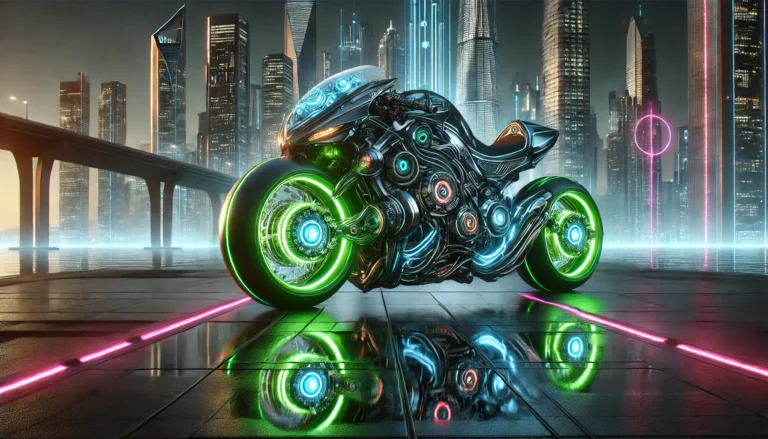Synchro Mbar Kawasaki is a term that has sparked curiosity among enthusiasts of advanced engineering, motor systems, and modern technological innovations. Whether you’re familiar with the name or hearing it for the first time, this article dives deep into what Synchro Mbar Kawasaki is, its applications, and why it’s gaining prominence in various industries.
What is Synchro Mbar Kawasaki?
Synchro Mbar Kawasaki refers to a sophisticated synchronization system developed for high-performance machinery, particularly within industrial and automotive sectors. This innovative mechanism focuses on precise control and synchronization in operations, making it ideal for modern, efficiency-driven environments. Synchro Mbar Kawasaki stands out for its capability to seamlessly integrate multiple systems, ensuring smooth and error-free performance.
Applications of Synchro Mbar Kawasaki
The versatility of Synchro Mbar Kawasaki makes it invaluable in a range of industries:
Automotive Industry
Synchro Mbar Kawasaki has made a significant mark in the automotive sector, especially in high-performance vehicles. Its synchronization system enhances the efficiency of complex mechanical and electronic components, improving fuel efficiency, torque control, and overall driving experience.
Industrial Automation
Industries that rely on automation benefit immensely from Synchro Mbar Kawasaki. Its precision synchronization ensures that robotic arms, conveyor belts, and assembly lines work in perfect harmony. This eliminates downtime and enhances productivity in manufacturing plants.
Aerospace Engineering
Aerospace requires precision at every stage, and Synchro Mbar Kawasaki delivers just that. By synchronizing engine components and auxiliary systems, it ensures optimal performance and safety in aircraft operations.
Renewable Energy Systems
Wind turbines and solar energy systems rely on advanced synchronization for efficient energy production and distribution. Synchro Mbar Kawasaki plays a crucial role in optimizing energy output by aligning mechanical and electrical systems.
Benefits of Synchro Mbar Kawasaki
Why is Synchro Mbar Kawasaki so widely adopted? Here are some of its key benefits:
Enhanced Efficiency
The system minimizes errors by ensuring precise coordination between various components, which directly improves efficiency.
Reliability
Synchro Mbar Kawasaki offers unmatched reliability, even under demanding conditions, making it a trusted choice for critical applications.
Cost-Effective
Although it incorporates advanced technology, its ability to reduce operational costs in the long run makes it a cost-effective solution.
Adaptability
The system is highly adaptable and can be customized to suit the specific needs of different industries, enhancing its appeal.
How Does Synchro Mbar Kawasaki Work?
Synchro Mbar Kawasaki uses advanced synchronization algorithms and mechanical precision to align operations. It incorporates:
- Sensors and Feedback Systems: These ensure real-time adjustments to maintain synchronization.
- Control Units: Advanced control systems monitor and coordinate the operations of all connected components.
- Robust Build: Designed for durability, Synchro Mbar Kawasaki can withstand extreme conditions without compromising performance.
Synchro Mbar Kawasaki vs. Traditional Synchronization Systems
Here’s how Synchro Mbar Kawasaki sets itself apart:
| Aspect | Traditional Systems | Synchro Mbar Kawasaki |
| Precision | Limited | High |
| Adaptability | Low | High |
| Efficiency | Moderate | Exceptional |
| Cost-Effectiveness | Varies | Long-term savings |
| Application Versatility | Limited | Wide-ranging |
Future of Synchro Mbar Kawasaki
The future looks bright for Synchro Mbar Kawasaki. As industries continue to prioritize precision, efficiency, and sustainability, the demand for such advanced synchronization systems will only grow. It’s expected to see more applications in emerging fields like robotics, autonomous vehicles, and smart manufacturing systems.
Challenges and Limitations
Despite its advantages, Synchro Mbar Kawasaki does face certain challenges:
- High Initial Cost: Advanced systems require significant investment upfront.
- Complexity in Integration: Implementing the system in existing setups can be challenging.
- Training Requirements: Operators need specialized training to use the system effectively.
Conclusion
Synchro Mbar Kawasaki is a game-changer in the world of synchronization systems. Its precision, adaptability, and reliability make it an essential tool in industries ranging from automotive to renewable energy. While it comes with certain challenges, the benefits far outweigh the drawbacks, making it a valuable investment for businesses looking to enhance efficiency and performance.
FAQs About Synchro Mbar Kawasaki
What is Synchro Mbar Kawasaki used for?
Synchro Mbar Kawasaki is used for synchronization in high-performance machinery across industries like automotive, aerospace, and manufacturing.
How does Synchro Mbar Kawasaki improve efficiency?
It ensures precise coordination between components, reducing errors and enhancing overall operational efficiency.
Can Synchro Mbar Kawasaki be customized?
Yes, the system is highly adaptable and can be tailored to meet the specific needs of various industries.
What industries benefit the most from Synchro Mbar Kawasaki?
Industries such as automotive, aerospace, industrial automation, and renewable energy see the most benefits.
Is Synchro Mbar Kawasaki expensive?
While the initial cost may be high, its efficiency and reliability result in long-term cost savings.
This comprehensive guide ensures you have a detailed understanding of Synchro Mbar Kawasaki, its applications, and its significance in today’s technology-driven world.


